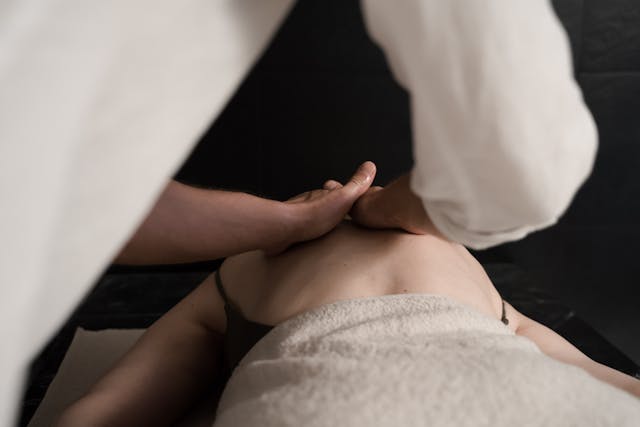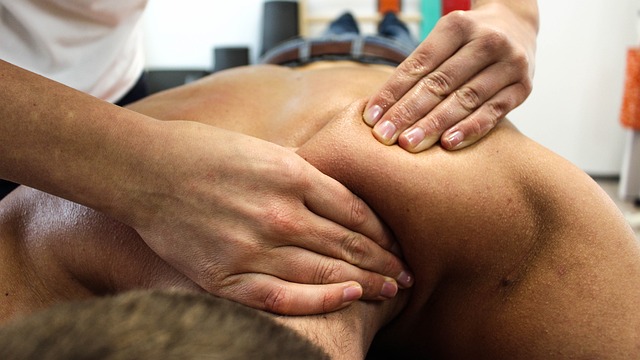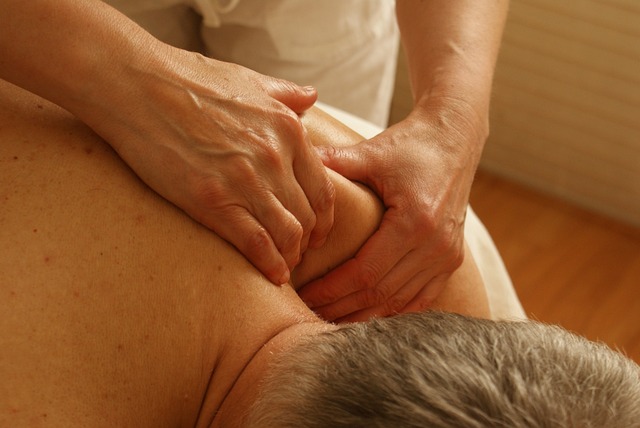
Back pain is the predominant cause of disability globally, affecting individuals due to various factors such as over-exertion, stress, injury, or other underlying issues. In the United States alone, an estimated 264 million workdays are lost annually due to debilitating back pain. The origins of this discomfort can vary, including muscle injuries, poor posture, obesity, prolonged periods of sitting or lying down, overexertion, and more. Depending on variables such as age, overall health, and the root cause of the pain, medical professionals might opt for various interventions. These could range from prescribing medications to suggesting specific therapeutic modalities like exercises, stretches, physical therapy, or neuromuscular massage therapy.
What Is Neuromuscular Massage?
Neuromuscular massage therapy is a lesser-known yet highly effective approach to alleviating back pain. In contrast to traditional massage techniques such as sports massage, deep tissue, or Swedish massage, neuromuscular massage therapy is uniquely tailored to address chronic muscle and nervous system disorders directly. Its primary objective is to address trigger points, enhance circulation, alleviate nerve compression, correct postural problems, and mitigate injuries resulting from repetitive movements.

Where and When Did Neuromuscular Massage Originate?
Originating in Europe during the 1930s, neuromuscular massage therapy was developed by Stanley Lief and Boris Chaitow, focusing on palpation to access sensitive soft tissues. Its introduction to the United States occurred in the 1940s and 1950s, with Dr. Janet Travell pioneering its practice. Dr. Travell notably served as the primary neuromuscular therapist and became the first female personal physician to a U.S. president, serving under President John F. Kennedy. She used trigger point palpation to alleviate stress and spinal cramps for the President.
Since its inception, neuromuscular massage therapy has evolved with the discovery of new manual techniques, gaining recognition from organizations like the American Academy of Pain Management for its efficacy in treating soft tissue injuries, particularly in the back. With advancements in technology and the increasing number of individuals trained in massage therapy, neuromuscular massage clinics have become more accessible, offering comprehensive solutions for pain relief.
How Does Neuromuscular Massage Relieve Pain and Tension?

Distinguishing neuromuscular massage therapy from deep tissue massage is essential. While both therapies delve deep into addressing problematic areas and relieving back pain, neuromuscular massage therapy specifically targets nerve-related issues. In contrast, deep tissue massage primarily focuses on releasing tension in muscles, tendons, and tissues. Moreover, neuromuscular massage therapists undergo extensive training to master techniques tailored to the individual’s needs, ensuring precise targeting of pain sources.
Neuromuscular massage therapy offers a broad spectrum of benefits beyond back pain relief. It effectively treats various disorders and symptoms, including carpal tunnel syndrome, sciatica, calf cramps, hip, knee, and jaw pain, headaches, temporomandibular joint disorders (TMJ), iliotibial band friction syndrome, plantar fasciitis, and tendonitis. Continual research endeavors to uncover the further potential of neuromuscular massage therapy in addressing additional health conditions and areas of pain.
The advantages of neuromuscular massage therapy extend beyond pain relief to encompass increased flexibility, higher energy levels, improved blood circulation, balanced musculoskeletal and nervous systems, reduced toxin levels, and enhanced posture. Patients often experience relaxation and reduced tension, leading to improved overall well-being. However, individual experiences may vary, necessitating consultation with a healthcare professional before undergoing treatment.
What Are the Other Benefits of Neuromuscular Massage Therapy?
Benefit 1: Enhanced Strength
Muscle weakness is a common symptom of neuromuscular disorders such as MS and Parkinson’s. However, physical activity is crucial in breaking the cycle of inactivity and muscle atrophy. With targeted neuromuscular therapy, it’s possible to build or retrain muscles, leading to improved strength.
Benefit 2: Pain Alleviation
Pain relief is often a welcome outcome of neuromuscular therapy treatments. By loosening and strengthening muscles, we can significantly reduce pain levels. Additional therapies like diathermy can also effectively address pain associated with conditions like Parkinson’s.
Benefit 3: Slowing Disease Progression
Neurological conditions such as MS and Parkinson’s are progressive, causing gradual deterioration over time. Neuromuscular therapy offers a proactive approach to address concerns early and slow disease progression.
Benefit 4: Maintenance of Independence
Preserving independence is a significant priority for individuals with neuromuscular disorders. Symptoms like instability and tremors can impact daily activities such as cooking, driving, and walking.
Benefit 5: Enhanced Quality of Life
Neuromuscular therapy has been shown to improve the quality of life for individuals with conditions like Parkinson’s and MS. By addressing symptoms such as impaired mobility, fatigue, and pain, neuromuscular therapy aims to enhance your emotional state, physical function, and overall life satisfaction.
What To Expect During a Neuromuscular Massage?

During a neuromuscular massage session, therapists apply varying pressure to the affected area, targeting muscle spasms for a specified duration. Techniques such as positional releases, palpation, and Proprioceptive Neuromuscular Facilitation (PNF) stretching are employed based on the patient’s condition and severity of symptoms. Following the session, proper hydration and adherence to aftercare instructions are crucial, as temporary soreness may occur, dissipating within a few days.
Unlike conventional massage therapies, neuromuscular massage therapy necessitates ongoing treatment to address underlying issues effectively. Regular sessions contribute to long-term relief, although individual sensitivity or intense pain may warrant specialized assessment and additional medical interventions.
Why Choose Massage and Wellness Collective for Neuromuscular Massage in Portsmouth, NH?
At Massage and Wellness Collective, we pride ourselves on being more than just a business—we’re a community dedicated to providing you with the best possible experience, especially when it comes to neuromuscular massage therapy in Portsmouth, NH. Beyond our excellent massage and wellness services, we are also about fostering connections and offering a unique experience tailored to our community’s needs, helping you achieve the relief and relaxation you seek. We prioritize your feedback because we believe the key to your wellness journey lies in the strong connections we build—with our clients, our community, and most importantly, with yourself.
Experience the difference at Massage and Wellness Collective. Book your appointment today and discover the transformative power of our neuromuscular massage therapy in Portsmouth, NH. Let us guide you on your journey to relaxation, rejuvenation, and optimal well-being. Your path to holistic wellness starts here—join our community today.